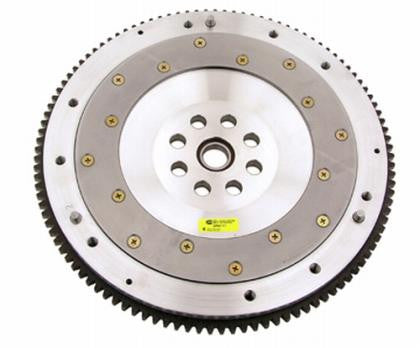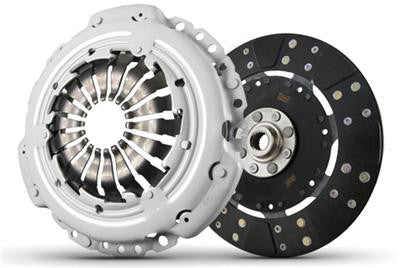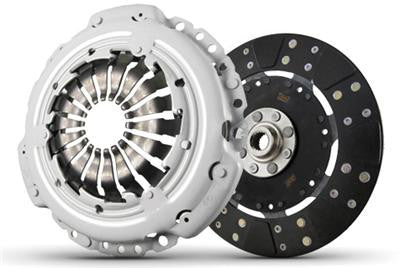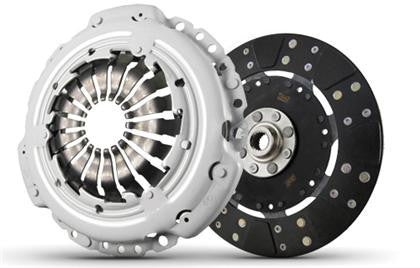Clutch Masters Steel Lightweight Flywheel (Carrera 997.2)
Designed to fit:
- 2009 - 2012 Porsche 911 Carrera (3.6 and 3.8L)
Note: This is a special order item that ships directly from the manufacturer.
Product Details:
Clutch Masters Flywheels are designed and tested to ensure the safety and quality of every flywheel. Years of R&D has given us the knowledge and firsthand experience to choose wisely the best material to manufacture flywheels that will surpass your expectations. Depending on the application, the majority of Clutch Masters flywheels are made from 6061 T6 Billet Aluminum, 1045 or 4140 Billet Steel. Clutch Masters Flywheels are SFI Certified meeting performance standards for the automotive and motorsport industry.
Benefits of a Clutch Masters Light Weight flywheel:
- Light-weight for improved performance and Quicker Rev’s.
- (Aluminum Flywheels) Consist of a replaceable heat shield (friction surface), eliminating need to resurface flywheel.
- Reduces turbo “lag” in turbo-charged engines.
- Increased supercharger efficiency due to less drag on the crank.
- Improved mid-range torque in naturally aspirated engines.
- CNC Machined and balanced.
- SFI Certified.
- DMF’s tend to be more expensive than a SMF.
- DMF’s are not designed to be resurfaced like conventional SMF.
- DMF’s usually weigh 30+ lbs depending on the application which will cause unwanted turbo lag.
- DMF’s cannot withstand a high rate of abuse and may fail under spirited driving.
- Reduced mass equals increased acceleration.
- Reduces turbo “lag” in turbo-charged engines.
- Increased supercharger efficiency due to less drag on the crank.
- Improved mid-range torque in naturally aspirated engines.
- SMF are able to be resurfaced and can be reused.
About Clutch Masters

Historically, high performance clutches have been a compromise. While improving holding or clamping pressure, manufacturers nearly always increase pedal pressure to an uncomfortable point, especially for stop-and-go traffic.
Besides drivability concerns, additional pedal pressure can adversely affect stock clutch linkage and cause premature thrust bearing wear, leading to missed shifts, damaged clutch components, and even engine destruction.
Today, thanks to Clutch Masters, increased holding pressure does not necessarily mean increased pedal pressure and the problems that can accompany it. By re-engineering the leverage or fulcrum point on the pressure plate through their Hi-Leveragetm technique, Clutch Masters has increased clamping power, often without changing pedal pressure.
Excessively increased pedal pressure, as found in many of today's traditional high performance clutches, places an unsafe amount of pressure on the delicate crankshaft thrust bearing found in most of today's sport compact automobiles. Placing undue stress on the thrust bearing typically causes the bearing to wear prematurely or fail altogether. This failure can lead to catastrophic internal engine damage.
A clutch, simply put, is a friction device that disengages and engages the engine from the transmission to allow for transition from motionless to movement and for gear changes. For street applications a smooth transition of power is essential while still being able to transfer all the power of the engine to the transmission. As power output of engines increase and demands on clutches become greater - for example high performance street or racing cars - the holding and clamping capacity of a clutch also must increase. This is where Clutch Masters' innovative engineering comes into play.
Designing heavy duty and high performance clutches with a very high clamp load and incredible coefficient of friction is a fairly simple engineering task. To do so without increasing pedal pressure has not been so easy. Even the education process of changing opinions that an increase in pedal pressure must accompany a high performance clutch with increased clamping force has been difficult.
Clutch Masters, a premier manufacturer of fine quality clutches since 1976, has taken this experience and a clean sheet of paper to re-engineer their line of performance clutches to address these problems. The proof of this success is now available from Clutch Masters as a complete line of clutch systems for high performance street and racing use. It is the first major breakthrough in performance clutches in over four decades.
Following are ways of increasing clamp load. The methods vary in sophistication and effectiveness:
***By combining these various methods of increasing clamping pressure with their re-engineered discs, Clutch Masters has developed a unique way of substantially increasing clutch performance without any of the negative side affects usually found in the typical high performance clutch.****
The Difference:
Clutch Masters clutches are true High Performance Clutch Systems and are technologically superior to anything currently on the market.
To develop a clutch with all the desired performance characteristics for intended applications is the challenge of a high performance clutch company. The Clutch Masters clutch system is unique in the industry. We use Hi-Leveragetm technology (refer to the Pressure Plate section) in our pressure plates, which significantly increases clamping force with no unnecessary increase in pedal pressure. Discs are designed either with reduced Marcel or a solid hub design to take advantage of our Hi-Leveragetmpressure plate. The combination of these cutting edge technologies creates the finest clutch system on the market.
Additionally, Clutch Masters, with over 35 years in the industry, has researched hundreds of friction materials and uses only the best materials available for each intended application. By combining the optimum clamping force with the finest friction materials - each with their own unique coefficient of friction - Clutch Masters has developed a line of clutches that provide ultimate performance in virtually any severe environment.
When the Class 30 Grey Iron material of a typical pressure plate is not suitable, Clutch Masters uses doubly strong Ductile Iron, which is the case with most CM clutches.
The friction material found on all OE discs and many high performance discs is simply riveted to the disc center section. Under severe use and/or high RPM applications, the disc material can fragment and break apart, becoming dislodged from the disc center section. Once this occurs, the clutch has failed completely and is rendered inoperable. Clutch Masters has solved this common problem on their street and street/strip discs by bonding a special steel backing plate (see disc technology and figure X) to the friction material. This unique feature provides significantly increased heat dissipation properties - heat is the #1 enemy of the clutch - and very high structural integrity to keep the disc intact under severe applications.
Racing Only discs use solid center sections to give all the reliability and performance they need on the track. Warning: These solid hub discs are not meant for street applications as they transfer very high shock loads to the transmission, causing premature transmission failure, and will chatter upon starting from a stop.
In the battle of Engine vs. Transmission, the clutch is designed to be that weak link. It is ultimately less expensive to replace a clutch than an engine or transmission. The challenge in building a high performance clutch is to build the unit for different intended heavy duty or severe applications which will hold the power; not break the transmission or internal engine components and retain an overall smooth operation of the entire system (whenever possible). This is the balancing act that Clutch Masters has perfected.








